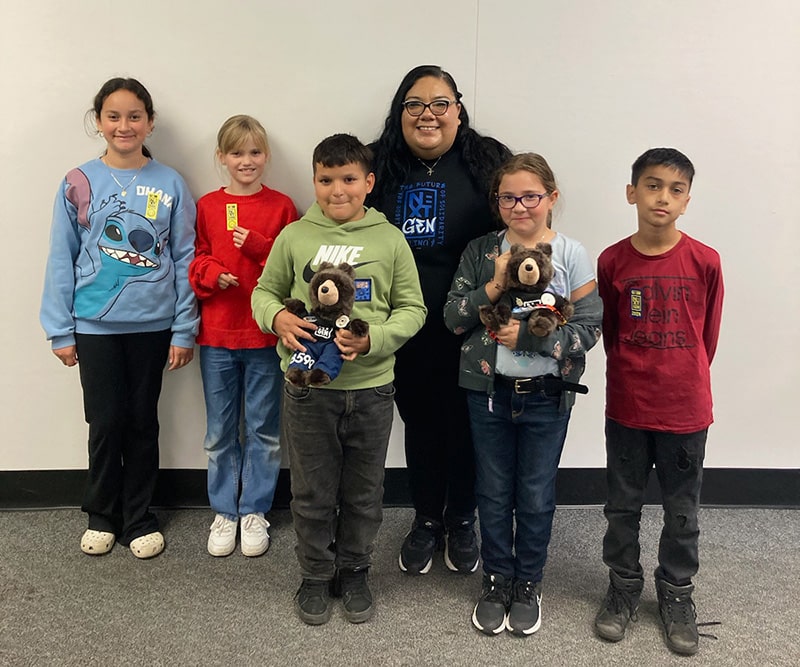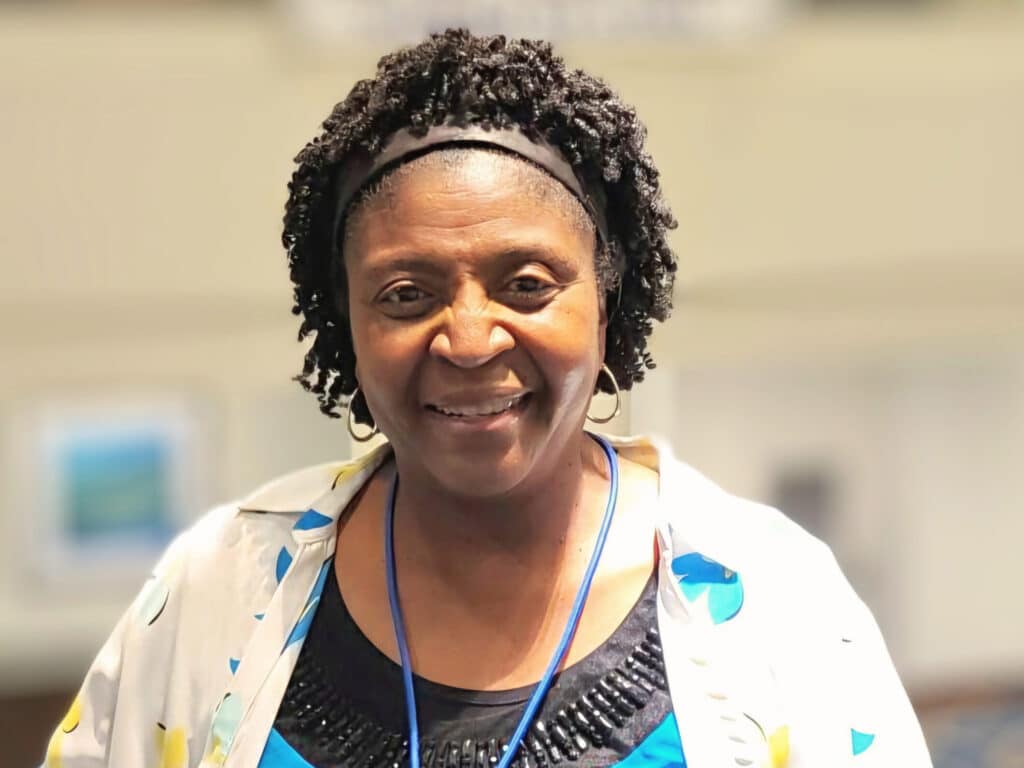‘Women of Steel Make Us Stronger’
20 Years Have Passed Since Members Approved WOS Constitutional Amendment
Bonnie Carey has been a Woman of Steel since 1978, when she went to work at the massive aluminum mill in Davenport, Iowa.
In a male-dominated environment, she became the first woman to operate computer-numerical-control (CNC) mills at the plant and became a safety trainer, instructing others on how to operate trucks and overhead cranes.
Carey became an activist through the union’s Rapid Response and Women of Steel programs, serving as a coordinator for both groups until she retired in 2009. Her activism didn’t stop there, as she went on to form SOAR Chapter 11-4 and to represent District 11 on the SOAR Executive Board, a position in which she still serves.
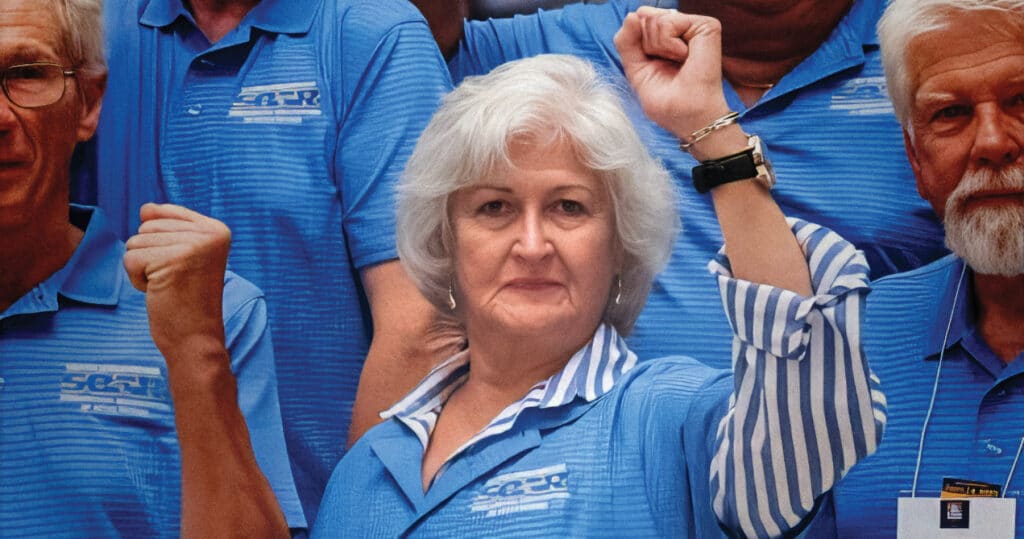
“The Women of Steel have worked with me in politics, they’ve worked with me in safety, now they’re working with me in SOAR,” Carey said. “These women are awesome.”
Since the Beginning
It was 20 years ago – at the 2005 USW Constitutional Convention – that members voted to amplify the voices of those “awesome” women – by amending the union’s founding document to ensure that all locals would have Women of Steel (WOS) committees.
While that change came two decades ago, women have been active in the USW since day one. In 1942, the year of the union’s founding, Betty Karr became the first woman to serve as a local president.
Over the years, despite the resistance they faced from some co-workers and employers, women continued to make their voices heard in USW union halls, workplaces and events across North America, and, in the process, helped to shape the future for Steelworkers as they fought for justice for themselves and their siblings.
“Women of Steel is an important part of the USW because women are an important part of the USW,” said Molly McVay, a Woman of Steel from Local 11228 at AGCO Corp. in Hesston, Kan.
The WOS program “provides mentorship in the form of guidance and support,” McVay said. “It creates a welcoming environment where people can openly talk about their feelings and concerns without fear of judgment or retaliation.”
Consent Decree
That type of environment has not always been available to women workers, particularly in industrial settings – like steel mills – that were historically dominated by men.
A 1974 consent decree – an agreement between the U.S. government and major American steelmakers – aimed to end discriminatory practices that had long prevented women and people of color from landing good jobs in those workplaces.
That same year, women workers founded the Coalition of Labor Union Women in Chicago.
Those milestones helped to open the door for more Women of Steel to become active members of the USW, and helped the organization grow into the strong, diverse union it is today.
“In so many of our local unions, the Women of Steel are at the heart of what we do,” said International Vice President Roxanne Brown. “They are some of our most passionate activists and most skilled organizers. The Women of Steel make us stronger.”
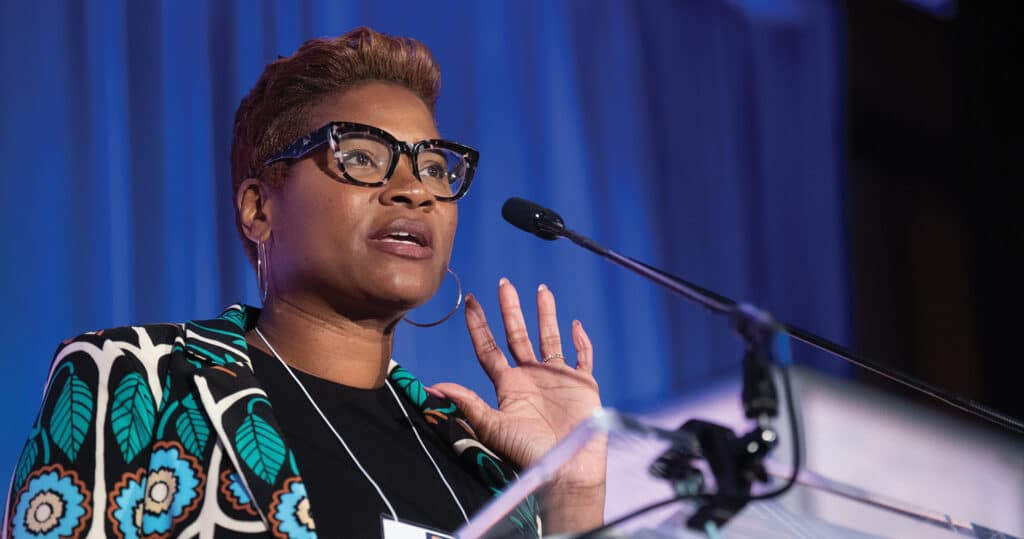
USW Leadership
Brown took office in 2019, after years of working with members to craft the union’s legislative agenda and advance worker-friendly policies in Washington, D.C., and in statehouses across the country.
Brown succeeded Carol Landry, the union’s first woman to serve as USW international vice president and the first woman on the union’s international executive board. During her 11-year tenure, Landry oversaw tremendous growth in the WOS program.
“If it weren’t for the Women of Steel program, I probably wouldn’t be where I am today,” Landry said in 2016. “It gave me the skills I needed to become an activist.”
When Landry retired in 2019, for the first time, two Women of Steel – Brown and former International Vice President Leeann Foster – joined the executive board.
Cathy Drummond, a WOS member since 1998, became the union’s first woman district director in 2023, when she was tapped to lead District 11.
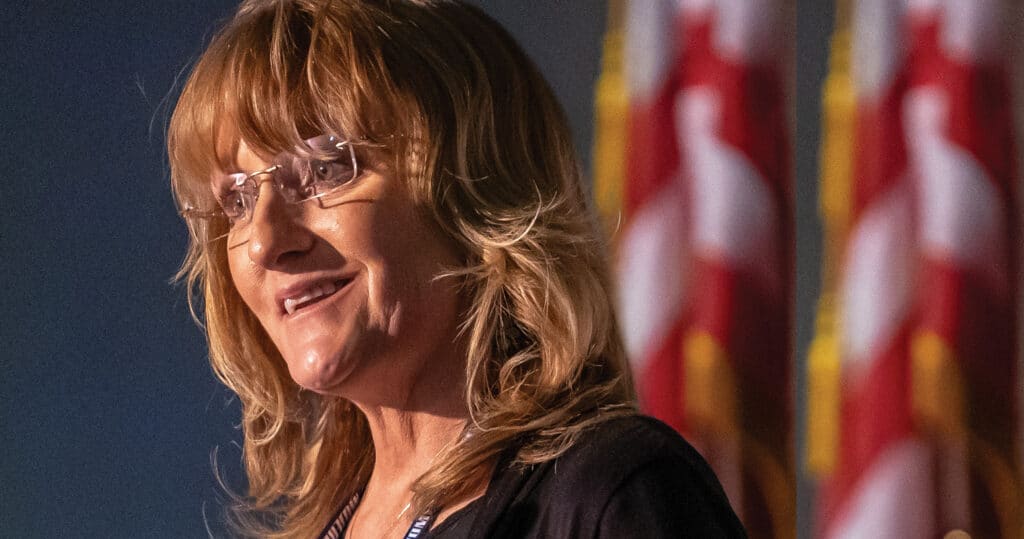
“It’s important that in every one of our workplaces, we make sure that we create space for Women of Steel and that we foster an environment where we can all support and learn from each other,” Drummond said.
Workplace Victories
In addition to reshaping the USW with their leadership over the decades, Women of Steel fought for justice for workers across North America.
With help from the union’s grassroots Rapid Response and political programs, WOS members fought to pass landmark legislation – such as the Lilly Ledbetter Fair Pay Act and the Violence Against Women Act – to address issues of discrimination and abuse.
Just as importantly, they fought at bargaining tables across all industries to establish contract language on issues such as sexual harassment, safety and health, child and dependent care, work-life balance, domestic violence and other important advancements.
They also fought on a global scale – through organizations such as IndustriALL and the International Labour Organization – to address gender-based violence, harassment and other issues affecting women workers around the world.
All the while, WOS members built solidarity with and fought alongside their union brothers, knowing that only through the power of unity could they achieve lasting victories.
“It’s important for union brothers to understand Women of Steel,” said former WOS Director Ann Flener-Gittlen, who led the organization for 17 years before retiring in 2023. “It strengthens the union as a whole for all of us.”
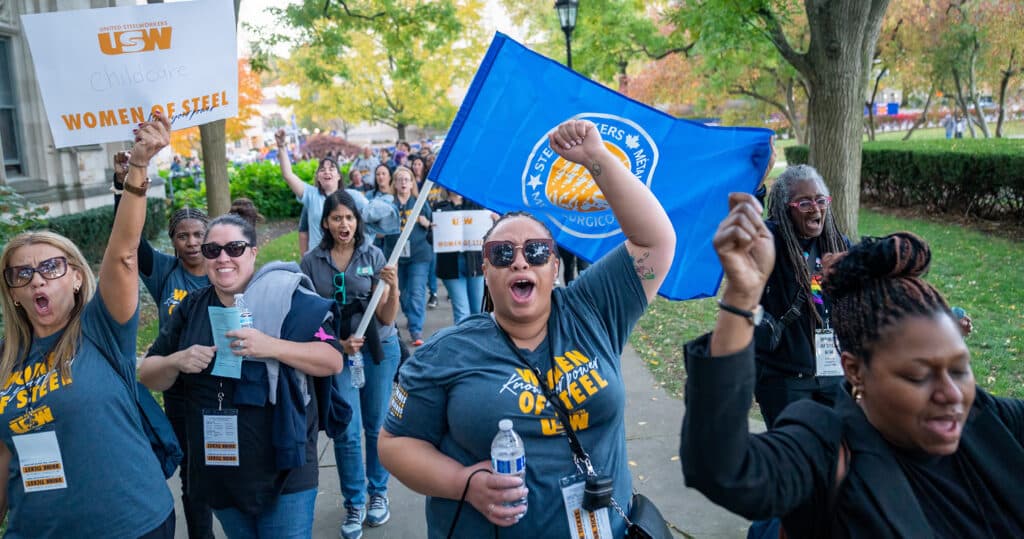
Raising the Bar
Addressing the issue of domestic violence through collective bargaining was a major part of “Raising the Bar on Women’s Health and Safety,” the union’s 40-page action guide initially developed by WOS and the USW’s Canadian office, and later adapted for use by local unions in the United States.
In addition to addressing the need for leave for workers experiencing intimate partner abuse, the guide provides tools members can use to address other issues, including harassment, gender identity, ergonomics, work-life balance, restrooms and change rooms, uniforms, personal protective equipment, and reproductive health.
Members can find the guide and other resources on the Women of Steel page.
Community Service
For all of their activism on an international scale, Women of Steel make perhaps their most visible and tangible impact on the local level, in their own workplaces and communities.
Beth Geary, of Local 1145, has worked at Ebara Elliott Energy in Jeannette, Pa., for 13 years. For her, the WOS program provides both a network of sisters to lean on at work and a group of like-minded people to spearhead community projects outside of work.
The Local 1145 WOS group has provided Thanksgiving dinners for families in need, partnered with Veterans of Steel to collect coats for a nearby community center, raised funds for a local women’s shelter, and sponsored sports teams, among other projects. In addition, they’ve fought for improvements in parental leave and uniform policies in their workplace.
“We try to localize a lot of the things that we do,” said Geary. “We are definitely known throughout the community.”
Geary, the first female president in her unit, credits her union sister, Jen Mullen, with helping to inspire her to take on a larger role in the union.
“None of this would have happened without us working together,” she said.
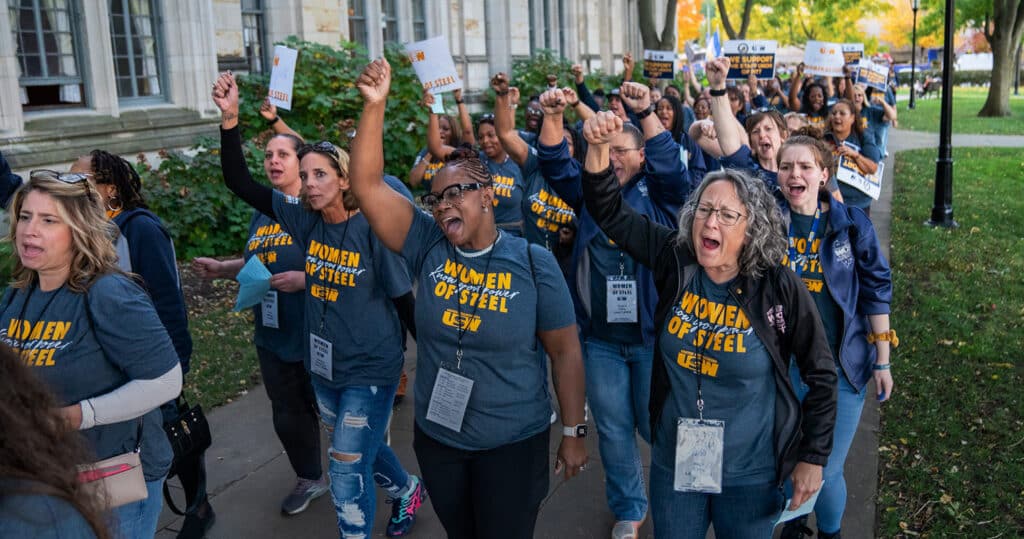
Inspiration and Education
Angel Ramirez of Local 1014L at Cleveland Clinic Akron General said that the most important aspect of the WOS program has been the education she receives through the WOS Leadership Program.
Ramirez, in year three of the program, said that when she became a USW member 11 years ago, she was shy and reserved. WOS, she said, brought her out of that shell.
“It was really inspiring,” she said. “Ever since then, I am much more outspoken.”
Now, in addition to serving as treasurer of her local, she is active in WOS, serves as chair of the local NextGen committee and as Rapid Response coordinator. This past April, she served as a delegate at the USW convention.
Like their siblings, the Local 1014 WOS contribute to their community, making blankets for families who lost loved ones, collecting supplies for animal shelters and helping to support local food banks.
The group also wrote contract language for their bargaining committee on issues like providing privacy for lactating women.
“Men don’t have to go through a lot of the same things that women do,” Ramirez said.
Ramirez and her Local 1014 siblings embody what Director Randie Pearson sees as the three pillars of the WOS program: Education, activism and service. Members must embrace all three of those aspects as they navigate an uncertain future, Pearson said.
“As women continue to face a tougher landscape,” she said, “it’s up to Women of Steel to educate ourselves and our sisters to ensure that we are our siblings’ keepers.”
Memorable Moments
Carey, whose activism stretches back more than 25 years, said that her most memorable moment as a WOS member came during the Iraq War, when members of Local 105 collected supplies and sent care packages to U.S. soldiers stationed overseas.
The boxes, which contained “Rosie the Riveter” stickers, struck a particular chord with the commander of one of the troops, whose late mother had been a “Rosie” during World War II. The sticker, he said, was a much-needed reminder that she was watching over him.
“I was so proud. It truly hit a lot of people’s hearts,” Carey said. “We’ve done a lot of community work, but I can’t top that one.”
By clicking Sign Up you're confirming that you agree with our Terms and Conditions.
Recent News Articles
Want to Learn More?
See how the USW is making a real difference in our communities and our workplaces.
